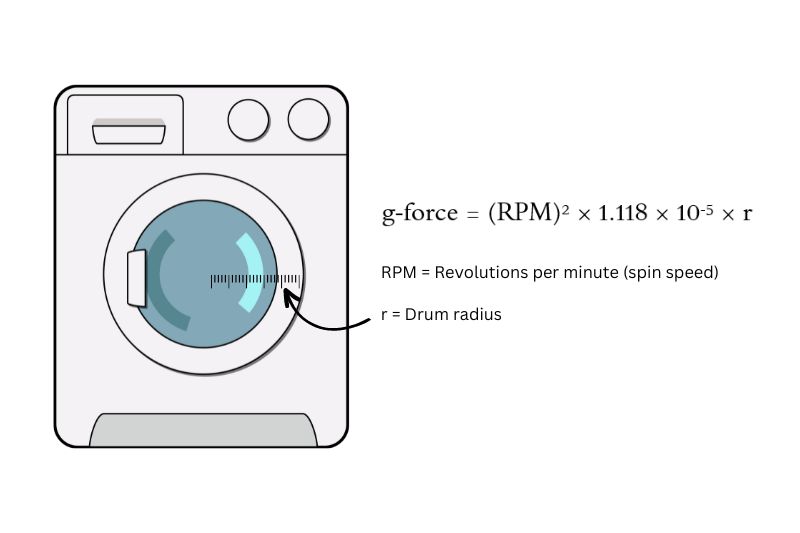Washing machines are among many of the appliances that we simply take for granted in the modern world, but what they can do is quite incredible.
In fact, there’s a certain science involved in a washing machine keeping your clothing clean, thanks to something called g-force.
Let’s dive into exactly what g-force is, and how much g-force there is in a typical washing machine.
What Is G-Force?
Unless you’re a NASA fanatic or know your stuff about science, you may never have heard of an object’s g-force.
The term g-force refers to the gravitational force equivalent, the measurement of the type of force per unit that causes a perception of weight.
Standing still on Earth’s surface, you have a g-force of 1 g (not to be confused with grams!)
G-force can be measured not only in your washing machine, but in plenty of other commonplace items that accelerate, such as cars.
How Much G-Force Is There in a Washing Machine?
The amount of g-force in your washing machine depends on the part of the cycle that your washing machine is in, as well as the RPM of your washing machine during the spin cycle.
RPM stands for revolutions per minute, which simply means how many times the drum rotates your clothes in a given minute.
During the spin section of your washing cycle, when your machine extracts water from your washed clothes, the RPM can reach up to 1600, or even 1800 for some advanced models.
During washing or rinsing, your washing machine will experience a g-force of around 1 g. This is simply the earth’s gravitational pull.
When your washing load experiences the most g-force is during the spinning process.
To determine the g-force experienced in a washing machine, you need to convert the spin speed from RPM to g-force.
The formula to convert RPM to g-force is: G-force = (RPM)2 × 1.118 × 10-5 × r
In this formula, r is the radius of the washing machine in centimetres. If we assume that the radius is 30 centimetres, and the spin speed (RPM) is 1200, then the formula is as follows:
Washing machine g-force = 12002 × 1.118 × 10-5 × 30 = 482.976 g
This is the estimated g-force of a 1200 RPM washing machine spinning at its highest speed.
Some washing machines will have less g-force than this, while industrial washing machines can have as much as 500 g when spinning at their top speeds. This is due to their larger drum sizes as well as their higher spin speeds.

What Are the Benefits of a High G-Force?
If you’ve ever been to a launderette or used an industrial standard washing machine, you might notice that your clothes come out of the spin cycle drier than usual.
This makes them quicker to dry in a tumble dryer or drying rack and less likely to cause damp issues in your home.
In short, the benefit of a high spin speed, which means the machine has a high g-force, is a reduction in water retention and a more efficient washing experience overall.
Removing more water from your clothes before they come out of the machine can have other benefits, too.
In Summary
The amount of g-force in a washing machine varies depending on the model of the machine and the period of the wash cycle.
The g-force on the spin cycle of a 1200 RPM washing machine will be about 482.976 g, while industrial washing machines can reach g-forces of as much as 500 g.
The higher the g-force in your machine, the more water will be removed from your clothing during the spin cycle, which helps to reduce tumble drying costs and prevent your home from becoming damp.
Consider size, cost, spin speed in RPM, and settings and features before committing to your washing machine of choice.

Lover of coffee, painting, and all things cute and fluffy. I’m always on the lookout for easier, more gentle ways to tackle awful household chores.






